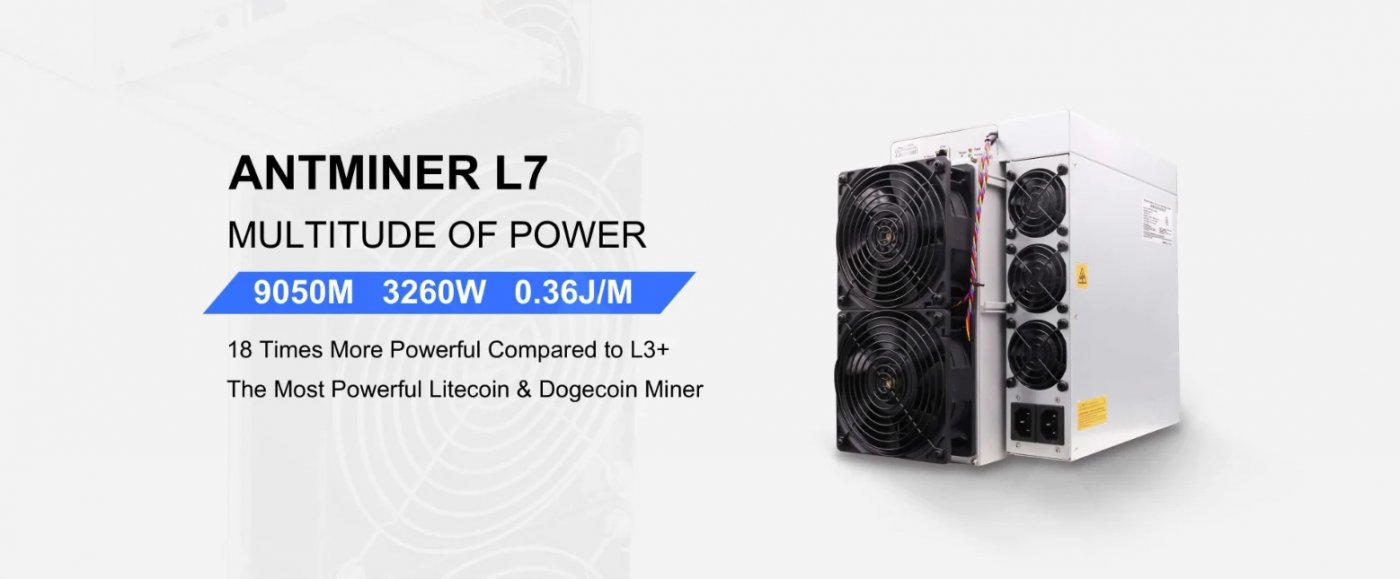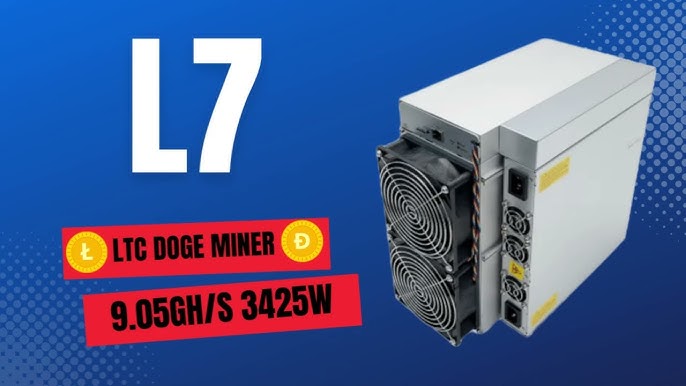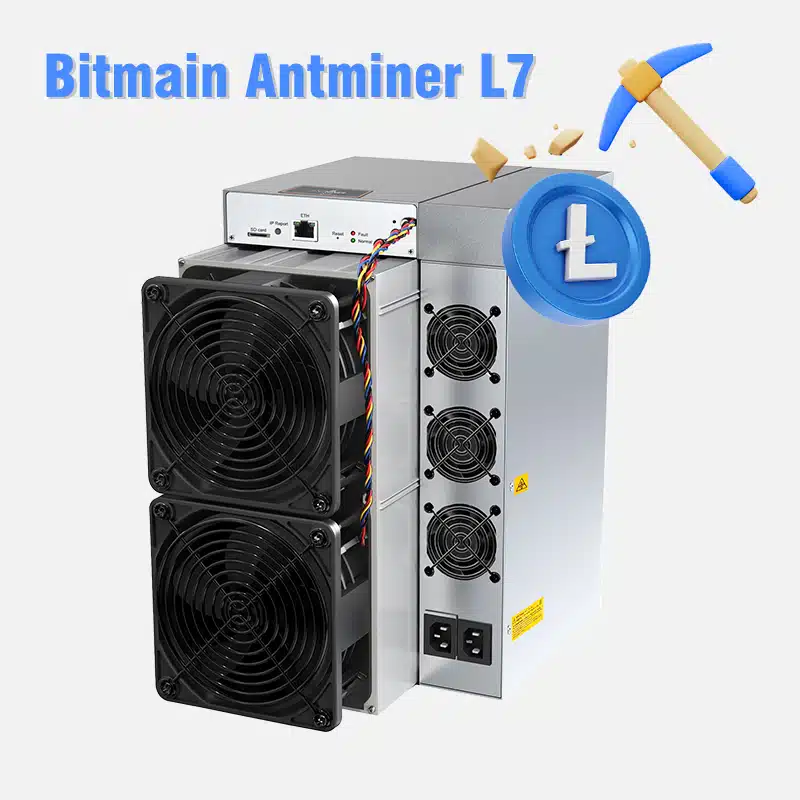Litecoin Miner L7 Troubleshooting Guide for Common Issues
The Litecoin Miner L7, developed by Bitmain, has quickly become a favorite among cryptocurrency miners for its exceptional performance and reliability. With a hashrate of 9050 MH/s and power efficiency of 0.36 J/MH, the L7 is a powerhouse for mining Scrypt-based cryptocurrencies like Litecoin (LTC), Dogecoin (DOGE), and Bellcoin (BEL). However, even the most advanced hardware can encounter issues. This comprehensive troubleshooting guide will help you diagnose and resolve common problems with the L7, ensuring your mining operation runs smoothly and efficiently.
Introduction to the Litecoin Miner L7
Before diving into troubleshooting, it’s essential to understand the key features and advantages of the Litecoin Miner L7:

- Unmatched Performance: The L7 delivers an industry-leading hashrate of 9050 MH/s, making it one of the fastest Scrypt miners available.
- Energy Efficiency: With a power efficiency of 0.36 J/MH, the L7 minimizes electricity costs while maximizing output.
- Durable Design: Built to withstand diverse environments, the L7 operates within a temperature range of 0°C to 40°C.
- User-Friendly Maintenance: Easily replaceable parts and accessories reduce downtime and simplify upkeep.
- Global Compatibility: The L7 supports input voltages of 200-240V AC and frequencies of 50-60Hz, making it suitable for worldwide use.
- Comprehensive Warranty: Bitmain offers a 180-day warranty, covering shipping costs for replacement units.
Despite its robust design, miners may occasionally face operational challenges. Let’s explore some common issues and their solutions.
Common Issues and Troubleshooting Steps
1. Miner Fails to Power On
- Possible Causes:
- Loose or faulty power connections.
- Insufficient power supply.
- Damaged power cable or PSU.
- Solutions:
- Ensure all power connections are secure and the power cable is properly plugged in.
- Verify that your power supply meets the L7’s requirements (200-240V AC, 50-60Hz).
- Test the power cable and PSU with another device to rule out hardware failure.
2. Low Hashrate or Inconsistent Performance
- Possible Causes:
- Overheating due to inadequate cooling or high ambient temperatures.
- Network connectivity issues.
- Outdated firmware.
- Solutions:
- Ensure the miner is placed in a well-ventilated area with proper airflow. Consider adding fans or relocating the unit to a cooler environment.
- Check your internet connection and ensure the miner is connected to a stable network.
- Update the miner’s firmware to the latest version via Bitmain’s official website.
3. Excessive Noise from Fans
- Possible Causes:
- Dust buildup on fans or heat sinks.
- Fans running at high speeds due to overheating.
- Solutions:
- Regularly clean the fans and heat sinks to prevent dust accumulation.
- Monitor the miner’s temperature and optimize cooling solutions to reduce fan speed.
4. Miner Not Detected by Mining Pool
- Possible Causes:
- Incorrect pool configuration.
- Network issues or firewall restrictions.
- Miner IP address conflicts.
- Solutions:
- Double-check the pool settings in the miner’s configuration interface. Ensure the correct URL, port, and worker credentials are entered.
- Verify that your network is stable and no firewall is blocking the miner’s connection.
- Assign a static IP address to the miner to avoid conflicts.
5. Frequent Hardware Errors
- Possible Causes:
- Defective hash boards or ASIC chips.
- Improper voltage or frequency settings.
- Firmware corruption.
- Solutions:
- Inspect the hash boards and ASIC chips for visible damage. If necessary, contact Bitmain for replacements under warranty.
- Ensure the voltage and frequency settings match the miner’s specifications.
- Reinstall the firmware or perform a factory reset if corruption is suspected.
6. Overheating or Shutdown Due to High Temperatures
- Possible Causes:
- Insufficient cooling or poor ventilation.
- Ambient temperatures exceeding the miner’s operating range.
- Solutions:
- Place the miner in a cool, well-ventilated area. Use additional fans or air conditioning if necessary.
- Monitor the ambient temperature and ensure it stays within the L7’s operating range of 0°C to 40°C.
7. Firmware Update Failures
- Possible Causes:
- Corrupted firmware file.
- Unstable internet connection during the update.
- Incompatible firmware version.
- Solutions:
- Download the firmware directly from Bitmain’s official website to ensure authenticity.
- Perform the update with a stable internet connection to avoid interruptions.
- Verify that the firmware version is compatible with the L7 miner.
8. High Power Consumption or Energy Costs
- Possible Causes:
- Suboptimal power settings.
- Inefficient power supply unit (PSU).
- Solutions:
- Adjust the miner’s power settings to balance performance and energy consumption.
- Upgrade to a more efficient PSU if necessary.
Preventative Maintenance Tips
To minimize downtime and extend the lifespan of your Litecoin Miner L7, follow these maintenance best practices:

- Regular Cleaning: Dust buildup can impair cooling efficiency. Clean the fans and heat sinks every 2-3 months.
- Monitor Temperature and Performance: Use monitoring tools to track the miner’s temperature and hashrate. Address anomalies promptly.
- Update Firmware Regularly: Keep the miner’s firmware up to date to benefit from performance improvements and bug fixes.
- Ensure Proper Ventilation: Position the miner in a cool, well-ventilated area to prevent overheating.
- Invest in Surge Protection: Use surge protectors to safeguard the miner against power fluctuations.
Leveraging Minerfixes for Comprehensive Support
For miners who prefer professional assistance, Minerfixes offers a one-stop service for all Litecoin Miner L7 needs. From setup and maintenance to spare parts and repairs, Minerfixes ensures your mining operation remains uninterrupted. Their partnerships with leading logistics providers like DHL and UPS guarantee swift and secure delivery of replacement parts and units.

Conclusion
The Litecoin Miner L7 is a game-changer for Scrypt-based cryptocurrency mining, offering unparalleled performance and efficiency. By understanding common issues and implementing the troubleshooting steps outlined in this guide, you can maximize your miner’s uptime and profitability. Regular maintenance and adherence to best practices will further enhance the L7’s longevity, making it a smart, future-proof investment for your mining operation.

Whether you’re a seasoned miner or just starting out, the Litecoin Miner L7, backed by Bitmain’s expertise and Minerfixes’ support, is your ticket to success in the competitive world of cryptocurrency mining. Happy mining!